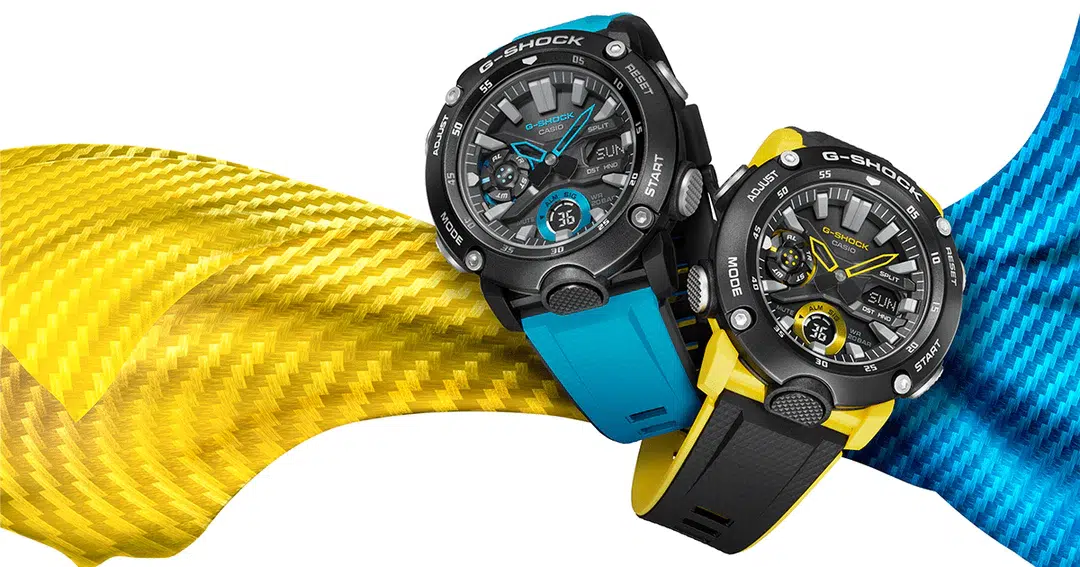History
CASIO: The history of the Japanese watch company
I'm sure you've all heard the name Casio at some point in your life. Maybe you have even bought some of the products of the world's most famous brand for many decades. The company was founded after World War II in 1946 in the Mitaka area of Tokyo by engineer Tadao Kashio. In the following text, you will learn more about the history of the Japanese company Casio.
In the beginning, the company was called Kashio Seisakujo and produced microscope parts and tools. The most important product the company produced at that time was a tube that made it easier for smokers to smoke. The tube was called "yubiwa" and was a ring that held the cigarette. This, allowed the user to smoke to the end of the cigarette without having to hold it.
Then the younger brother of Kashio's founder, Toshio, who worked as a technician at Japan's Ministry of Communications, wanted to join the business. With their profits from the yubiwa tube, they decided to develop more calculators. In those years, calculators had gears and to operate them, one had to use a crank. Toshio, who knew electronics, decided to create a calculator with electromagnetic valves.
After several trials, in 1954 Kashio successfully released Japan's first electronic calculator. The ten-key numeric keypad was one of the most important innovations of this calculator. Also, the Kashio calculator had one display window rather than three windows as there were on other calculators.
In June 1957, "Casio Computer Co." was founded. and released the world's first fully electric calculator, which cost 485,000 yen. The company focused on producing electric computers and calculators and started to produce wrist computers. After ten years, the first overseas Casio company was founded in New York. During the same period, Casio established companies in Hamburg, London and West Germany.
In the early 1970s there was saturation and intense competition in the calculator market. To differentiate itself from this Casio decided to create the world's first digital quartz watch. In 1974 the watch was manufactured under the name "Casiotron" which was very innovative for that time. It had a small computer screen where it showed the time and date. The company's profits from the sales of the digital wristwatch grew very quickly.

In 1981, Casio 's top engineer was Kikuo Ibe. The breaking of his beloved watch inspired him to make an indestructible watch. To achieve his goal, he formed a team of three people and began testing. But no hard metal could sufficiently protect the digital watches' digital function from shocks.
One day, he saw some children playing in a park and noticed that the inner workings of a bouncing ball were not affected by the impact. He built a clock with a cavity and stored the internal clock module inside it. Testing of this particular clock lasted almost two years. In 1983, the "G-Shock", the first durable wristwatch, was released.
The name comes from the unit G and is the acceleration of gravity. The case of the "G Shock" is hollow and the internal unit of the watch does not come into contact with it. So if the Casio watch is dropped, only the outer part will be affected. Still some parts on the case are made of urethane to protect the glass from various impacts. At first, the "G-Shock DW-5000C" became popular only in the US. However, it later became a worldwide success.

In 1984 Casio wanted to further develop the wristwatch it had produced up to that point. It created a watch, the "CD-40" where the owner could store up to 10 phone numbers. In 1985 the Japanese company created the world's thinnest watch and it was called the "PELA FS-10". It quickly became popular with millions of sales. It was 3.9 mm high and weighed only 12 grams.

Casio, in 1989 introduced the first wristwatch with a thermometer, and in 1993 introduced the first diving watch, the "Frogman DW-6300". Also in the 1990s, the "Baby-G" was introduced. It was a stylish version of the "G-Shock" but just as durable and ideal for women.

A few years later, the company released a wristwatch with a radio. In June 1999, the Japanese company Casio released the world's first watch with GPS and in 2001 it created a sundial. In 2012, a new watch factory was established in Thailand. Also in 2016, the "Smart Outdoor Watch" was created.

To conclude, the Japanese company Casio, thanks to its innovative ideas, managed to produce, apart from the innovative digital wristwatches, the world's first inkjet printer, the world's thinnest digital camera, digital cameras, waterproof mobile phones, etc. Today, it takes care of children's education and provides scholarships to the best students to continue their studies.

